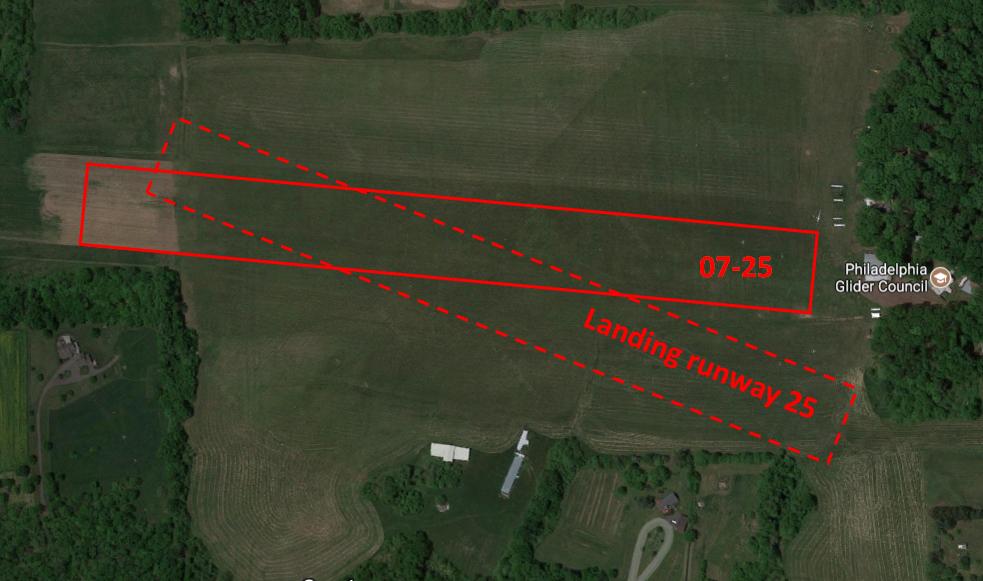To start: I flew gliders for 8 years at a field on the northern edge of KPHL's mode C veil and never saw a towplane (purposely) drop a rope for a non-emergency. We operated out of a grass field surrounded by trees on most sides (maybe 10 miles south of KCKZ) and never had problems with towplanes landing with the rope attached.
There are some factors here that feed into this. That particular field (http://www.pgcsoaring.com/) has generally well taken care of and is a completely turf field. I think we added some lime markings to denote a landing box on our usual landing runway, but that's about it. I have a picture of the runways used for normal operations below. Takeoffs were started on the far right on runway 25 (picture has been rotated), and landings, typically, were facilitated on the runway marked by a dashed line.

Now, something that isn't quite clear from the overhead views are the trees. At the far right hand side of 07-25, you have a stand of trees (and two hangers) that go up 40-50 feet. Landing over these, particularly with a tow line, can put you out in the boonies if you want to make sure that the tow line isn't dragging through the trees. The FAA Glider Flying Handbook (https://www.faa.gov/regulations_policies/handbooks_manuals/aircraft/glider_handbook/media/gfh_ch12.pdf) indicates that a 200 ft tow rope can "fly" about 130 ft below a towplane, so clearance in that dimension is critical. The pictured field actually has 3 operating runways (07-25, 01-19, and 13-31) and, on the approach to each (save 25), there are no trees near the runway threshold or the runway is situated at the top of a significant hill.
Insofar as ground abrasion goes, I'd see wear and tear on a towline over time, but it was relatively slow accumulation. Slow enough that you could track it by rope checks at the weak link (if in use) and tow hook prior to each flight...which you are probably doing anyhow. We always had a spare rope spliced and on a reel so that an in-use line could be quickly replaced during normal operations (maybe a minute or less during a regular takeoff if it was coordinated well). But that's more or less semantics: the point is, for the turf field we had, which was well-cleared of rocks, branches, or man-made debris, there were no problems with dragging a rope over the ground provided that pilots and line crew were doing the routine safety checks that they would be doing regardless. Not dropping a tow line also kept down non-airplane vehicle traffic on the field during operations (i.e., it eliminated the need for another runner to get the tow line, especially when aircraft are anticipated to be landing).
The Glider Flying Handbook has this much more to say about landing with a tow rope (GFH 12-10):
Landing with the tow line attached is not prohibited by
regulation; however, the following points should be considered:
Obstructions are cleared by more than the tow line
length (altimeter lag considered).
The field is well turfed. It is simply inviting early
tow line failure from abrasion to land with the tow
line on hard ground or paved runways. Landing with
the tow line should never be attempted unless the
field has clear approaches and is at least 2,500 feet
in length.
Other situations require the tow line to be dropped, normally
in the glider launch area, during short approach to the
runway. If the tow line is to be dropped, the tow pilot must
be constantly aware of the launch area situation. The tow
line drop area must be defined and ground personnel must be
briefed and aware of the drop area. Ground personnel must
stay clear of the drop area, and the presence of an individual
in the drop area requires an immediate go-around by the pilot
of the tow plane without dropping the tow line.

